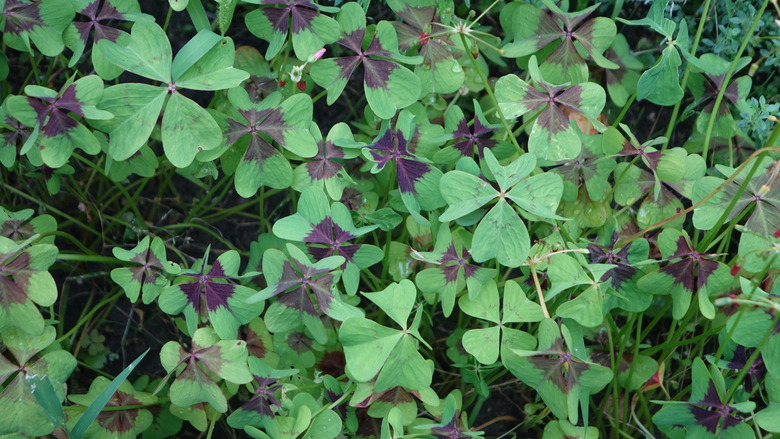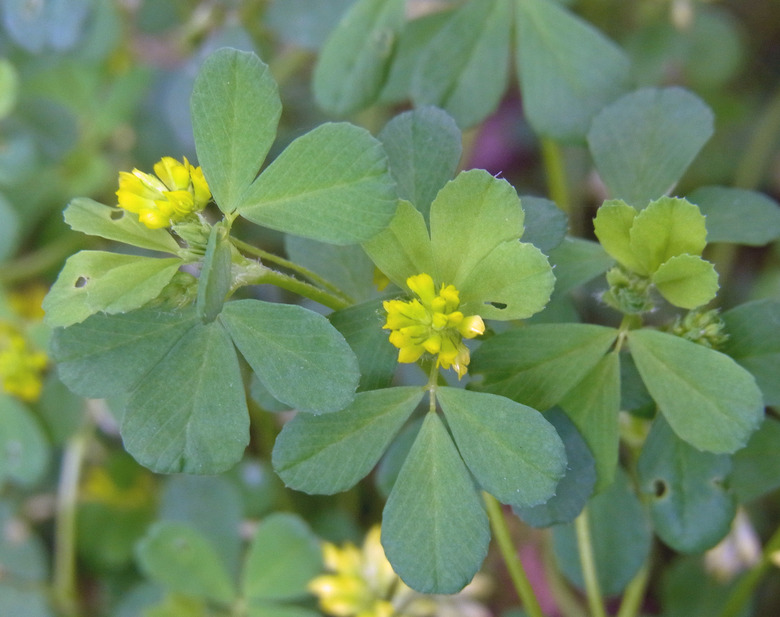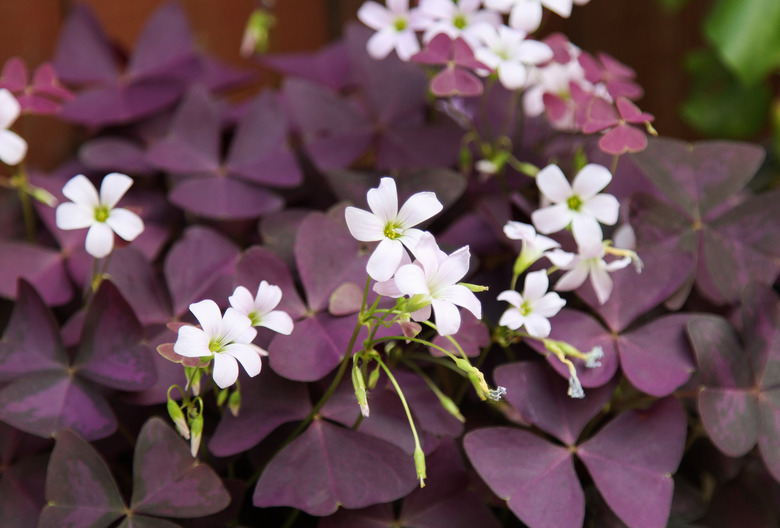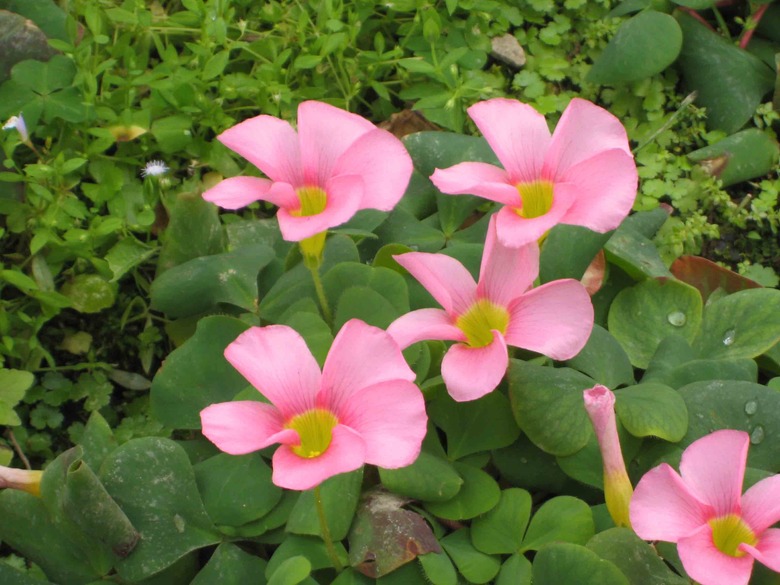Caring For A Shamrock Plant
St. Patrick's Day wouldn't be the same without the shamrock, but the real shamrock (Trifolium spp.) is not a plant that can withstand imperfect conditions, so another plant—not a true "shamrock" but one that has similar characteristics—has usurped its place. This is wood sorrel (Oxalis spp.), and it is the plant widely touted and sold as "shamrock" during March, the season of St. Patrick's Day.
Because oxalis (USDA hardiness zones 3 to 11) is generally available and masquerades successfully as shamrock, this is the plant most people have. So, here's how to care for oxalis, but first, what was that real shamrock again?
The Real Shamrock: Is That a 4-Leaf Clover?
The real Irish shamrock is the three-leaf clover (Trifolium dubium). As everyone knows, if you ever find a 4-leaf clover, the gods have blessed you with good luck, because those are found only once in about every 10,000 clovers.
The legend has it that Saint Patrick used the three-leaf clover to represent the Holy Trinity, and now the shamrock heralds spring, a season of rebirth. In the U.S., the four-leaf clover is used in various ways, among them as the logo for 4-H clubs, symbolizing head, heart, hands and health.
Growing a clover is a tough feat, especially indoors. They need moderate temperatures, so if it's too warm or too cold, they become leggy and thin. They also need extremely bright light, another factor that makes growing them as houseplants difficult. As a result, Trifolium dubium is rarely available for purchase by home gardeners.
The False Shamrock Plant: Wood Sorrel
Don't let the term "false" obscure the wood sorrel plant's value in the landscape or as a houseplant. The Oxalis genus includes more than 800 species, growing across the world on every continent except Antarctica. The leaves are triangular or heart-shaped in a range of colors, including purple, pink, green, silver and burgundy.
The purple shamrock plant (Oxalis triangularis, zones 8 to 11) is one of the most popular shamrocks, with its white flowers, pinkish or lavender leaves and green stems. The cultivar Oxalis purpurea (zones 9 to 10), also known as purple wood sorrel, has large pink flowers and is a native of South Africa.
Caring for a Shamrock Plant
Depending on the variety, oxalis can be grown directly in your garden or as an indoor plant.
Oxalis plants propagate by underground rhizomes, but most desirable varieties available to the home gardener are warm-loving plants, so you may need to lift them in the fall to replant in the spring if you want them to winter over successfully. You can divide the rhizomes to create additional plants before replanting.
Tip
Shamrocks have no serious disease problems but might attract whiteflies or aphids.
Growing Shamrock in the Landscape
Grow shamrock outdoors in the garden only if you live in a hardiness zone recommended for your variety of plant.
Choose a location in full sun to partial shade. Wood sorrel plants are not picky about soil pH and can usually handle from 6.0 to 8.0 pH. Plant them in well-draining soil from 12 inches to 3 feet apart, depending on the variety, so follow the directions on your plant's tag. Water regularly to ensure even moisture.
Tip
When grown outdoors, oxalis plants rarely need fertilizing but may benefit from a balanced fertilizer during the growing season.
Growing Shamrock as a Houseplant
When growing shamrock in a container, choose high-quality potting soil and a pot with good drainage. Shamrock needs bright light, so place it in a south-facing window. An oxalis grown as a houseplant needs cool conditions, ideally no warmer than 75°F during the day but no colder than 50°F at night.
When grown indoors, it requires a humid environment. Because it's tough to maintain humidity indoors, consider using a humidifier; alternatively, place the pot on a bed of wet pebbles. Maintain regular moisture; when the potting mix is dry 1 inch down, water well but avoid overwatering.
Shamrocks require regular fertilizing during their growing season. For best results, apply a liquid fertilizer once a month.
Shamrock Dormancy
Some shamrock varieties may naturally go dormant after flowering, especially when it is too hot or dry. If the leaves begin to die back, stop watering and fertilizing and allow the plant to "rest."
If the plant is growing indoors, move it to a darker location. Purple-leaved types usually require a dormancy period of about one month, while others may require two to three months.
When new growth appears, resume regular plant care.
References
- University of Missouri Integrated Pest Management: Oxalis – Shamrock's Imposter
- North Carolina State Extension: Oxalis Triangularis
- University of Missouri Integrated Pest Management: Shamrocks: More Than a Bit O'Luck
- Fine Gardening: What Is a Shamrock and How do You Grow Them?
- Missouri Botanical Garden: Oxalis Purpurea
- University of Wisconsin, Madison: Shamrocks, Oxalis spp.



